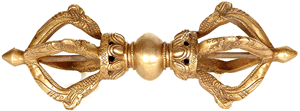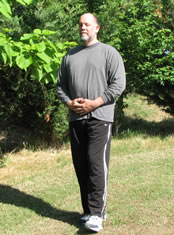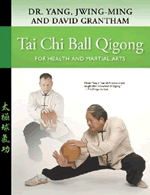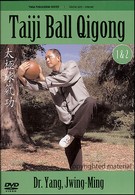Subject and Title Indexes
Koan Database Project
To Brief Spiritual Lessons, Parables,
Koan Cases, Stories, Definitions, Tales,
Questions, Dialogues, Lectures, Statements
Indexing by Michael P. Garofalo
Sparks: Brief Spiritual Stories, Dialogues, and Encounters
Matches to Start the Kindling of InsightMay the Light from Your Inner Fireplace Help All BeingsZen Buddhist Koan CollectionsCatching Phrases, Inspiring Verses, Hard QuestionsBibliography, Indexing, Quotations, Notes, ResourcesResearch by Michael P. Garofalo
Gateless Gate or Gateless Barrier Koan Collection (GB)
48 Cases of Brief Koans, Stories, Spiritual Encounters, Wisdom Tales, Sermons, Dialogues
Compiled around 1250 CE
Indexed by Michael P. Garofalo. First Draft on March 25, 2023.
Source for Case Titles: The Gateless Gate, Translated by Koun Yamada Roshi, 2004.
Alphabetical List of the Gateless Barrier (GB) Koan Collection Cases. PDF, 2 pages.
List of Cases by Case Numbers in the Gateless Barrier Koan Collection. PDF, 2 pages.
Subject Index to Cases in the Gateless Barrier (GB) Koan Collection. PDF, 9 pages.
PDF files are searchable. Use the keyboard strokes: Ctrl + F This will open the Search or Find box.
[I just started using Microsoft Access again on 3/23/2023. Just learning this database software by reading books and by creating this Koan Database Project in 2023. I am focused on improving my indexing skills, adding content, and improving my database Report creation skills.]
Reminder: When you find a hypertext document or file (PDF, JPG, .doc, GIF) on the Internet that seems valuable to you, then download the hypertext document or file to your computer's hard disk drive or on your external hard disk drive. Why? That hypertext document or file might be gone tomorrow!
The Blue Cliff Record Koan Collection (BCR)
100 Cases of Brief Koans, Stories, Spiritual Encounters, Wisdom Tales, Sermons, Dialogues
Compiled around 1125 CE
Indexed by Michael P. Garofalo. First Draft on March 25, 2023.
Source for Case Titles: The Blue Cliff Record, Translated by Thomas Cleary and J. C. Cleary, 1977.
Alphabetical List of the Blue Cliff Record (BCR) Koan Collection Cases. PDF, 4 pages.
List of Cases by Case Numbers in the Blue Cliff Record (BCR) Koan Collection. PDF, 4 pages.
Subject Index to Cases in the Blue Cliff Record (BCR) Koan Collection. PDF, 21 pages.
Daodejing by Laozi, Te Ching by Lao Tzu (DDJ)
Daodejing by Laozi.
81 Verses, Cases, Chapters. Our popular version compiled around 220 CE.
Indexed by Michael P. Garofalo. Third Draft in June 2014.
A typical webpage created by Michael P. Garofalo for each one of the 81 brief Chapters (Verses, Cases, Sections) of the Daodejing includes 25 different English language translations or interpolations for that Chapter, 5 Spanish language translations for that Chapter, the Chinese characters for that Chapter, the Wade-Giles and Hanyu Pinyin transliterations (Romanization) of the Mandarin Chinese words for that Chapter, and 2 German and 1 French translation of that Chapter. Each webpage for each one of the 81 Chapters of the Daodejing includes extensive indexing by key words, phrases, and terms for that Chapter in English, Spanish, and the Wade-Giles Romanization. Each webpage on a Chapter of the Daodejing includes recommended reading in books and websites, a detailed bibliography, some commentary, research leads, translation sources, a Google Translate drop down menu, and other resources for that Daodejing Chapter.
Chapter and Thematic Index (Concordance) to the Tao Te Ching by Lao Tzu
English Language Daodejing Translators' Source Index
Spanish Language Daodejing Translators' Source Index
Ripening Peaches: Taoist Studies and Practices
Taoism: A Selected Reading List
Daodejing by Laozi (DDJ)
81 Verses, Cases, Chapters, Sections. Our popular version compiled around 220 CE.
Indexed by Michael P. Garofalo. First Draft in June of 2023.
Source for Case/Verse/Chapter Titles: Tao Te Ching translation by Lin Yutang in 1955.
For the Koan Database, I limited search terms/Tags to 3 entries.
My more extensive online searchable Concordance for the Tao Te Ching is described above.
List of Cases by Case Numbers in the Daodejing (DDJ). PDF, 3 pages.
Alphabetical List of the Cases in the Tao Te Ching (DDJ). PDF, 3 pages.
Subject Index to Cases in the Tao Te Ching (DDJ) PDF, 15 pages.
The Book of Serenity (BOS) Book of Equanimity
100 Cases of Brief Koans, Stories, Spiritual Encounters, Wisdom Tales, Sermons, Dialogues
Compiled and published around 1224 CE.
Indexed by Michael P. Garofalo. First Draft on June 1, 2023.
Source for Case Titles: The Book of Serenity: One Hundred Zen Dialogues. Translated with commentary by Thomas Cleary, 2005.
Alphabetical List of the Book of Serenity (BOS) Koan Collection Cases. PDF, 4 pages.
List of Cases by Case Numbers in the Book of Serenity (BOS) Koan Collection. PDF, 4 pages.
Subject Index to Cases in the Book of Serenity (BOS) Koan Collection. PDF, 21 pages.
Master Subject Index
Koan Database Project
Indexing by Michael P. Garofalo
First Draft, April 1, 2023
This subject index includes Cases from the:
Blue Cliff Record (BCR), 100 Cases
Gateless Barrier (GB), 48 Cases
Book of Serenity (BOS), 25 Cases
Daodejing (DDJ), 20 Cases
Fireplace Records (TFR), 12 Cases
PDF files are searchable. Use the keyboard strokes: Ctrl + F This will open the Search or Find box.
Master Subject Index of the Koan Database Project. PDF, 42 pages.
PDF files are searchable. Use the keyboard strokes: Ctrl + F This will open the Search or Find box.
What's Coming in 2023 and 2024:
Michael Garofalo's Brief Spiritual Lessons Indexing Project
Indexing Brief Spiritual Lessons, Stories, Koans, Encounters, Wisdom Tales, Lectures,
Sermons, Lore, Dialogues, Inspirational Verse, History, Scriptures, Advice, Poetry,
Buddhist and Taoist Literature, Collected Lessons, and Lore
Tao Te Ching by Lao Tzu. Daodejing by Laozi. 81 Cases, Verses, Chapters. Our version compiled around 220 CE.
Book of Serenity (BOS) 100 Koan Collection; Compiled around 1224 CE.
Master Subject Index of the Koan Database Project
Dogen Koan Collection (Shinji Mana Shobogenzo) (SMS) 301 Koan Collection; Compiled around 1220 CE.
Transmission of Light. 53 Biographies, compiled by Keizan around 1310 CE.
Open a Mountain. 60 Koan Collection, compiled by Steven Heine, 2001.
Entangling Vines. 272 Koans; compiled and printed in Japan in 1658.
Modern (MOD) Modern (1800-1999) Contemporary Brief Spiritual Verses, Key Leaders, Information
The Record of Linji. 50 Koan Collection; translation and commentary by Ruth Fuller Sasaki, 2009. Compiled around 850 CE.
Books I Use in My Research and Study of Koan Collections
Sparks: Brief Spiritual Stories, Dialogues, and Encounters
Matches to Start the Kindling of Insight
May the Light from Your Inner Fireplace Help All Beings
Zen Buddhist Koan Collections
Catching Phrases, Inspiring Verses, Hard Questions
Bibliography, Indexing, Quotations, Notes, Resources
Research by Michael P. Garofalo
The Fireplace Records
By Michael P. Garofalo

![]()























